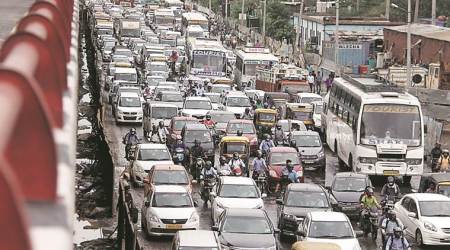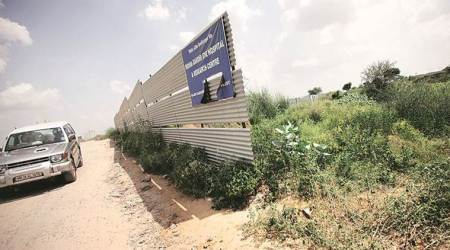 Shanker Raman
Shanker Raman
You are an industry veteran but Gurgaon, releasing this Friday, is your directorial debut. Are you having pre-release jitters?
I am not tense or anxious. If I have to define what I am feeling, it would be absolute curiosity. For me, this long journey of making the film and arriving at a point where the team is quite satisfied with it to put it out there, is quite fascinating. I feel quite child-like right now.
How has the journey of making Gurgaon been for you?
We started shooting in January 2015. It was essential for me and my editor (Shan Mohammed) to be on the same page as far as the story’s tone is concerned. There was a lot of material, which we had shot, to flip through. So, we took our time. We took time to decide its pace and whose story we wanted it to be. It is not a film that follows a traditional narrative — it has more than one protagonist. Talking to our mentors at NFDC’s Work-In-Progress lab gave us clarity. The original script has been turned on its head.
Was it a natural choice for you to turn a director after working as a cinematographer for two decades?
That urge was always there. I was always interested in filmmaking, it so happened that I studied cinematography at the Film and Television Institute of India, Pune. I chose to study that because I thought if they asked me any photography-related questions during the interview, I should be able to answer them. While studying physics at Delhi’s St Stephens College, I discovered photography and pursued it as a hobby. I wished to be a photojournalist but that did not work out. The other plan I had was to study MBA and, thankfully, I did not clear the entrance examination. In hindsight, I am happy that I studied cinematography as I got to learn the craft the way I can use it to my advantage.
Being a cinematographer, do you plan the scenes differently?
I used to think in visual terms earlier, since I am trained to interpret the written word through images. When I became a writer, I started wondering what is the heart of the matter. Earlier, I would wonder about colour and lensing. Now, I think about what I have to say. When I shoot for others, I interpret the screenplay in terms of images and decide on the images that justify the contexts and subtexts. With Gurgaon, it was more about getting into the world of its script. Everything that followed was based on that. For example, during my conversations with my cinematographer (Vivek Shah), we spoke more about the story than colour, costume and light.
While watching the movie, one gets the impression that you are an insider to the film’s world?
I was drawn to this world more than the story itself. The world I am attracted to is that of entitlement and the power dynamics prevalent in a patriarchal society. I wanted to explore the heart of it and investigate the source of it. I wonder if I stand the risk of being such a person with entitlement, or am I that person already in certain areas of my life. The story serves this world most effectively; it presents a society where people have secrets. So, they live in a social constraint that does not work. When they lack warmth and self-expression, aggression and violence become inevitable.
The film talks about female infanticide as well as adoption. Did you having a daughter influence that?
It was more about the craft than personal emotions. The issue of infanticide is very important to me. I wanted to be bring it up but wanted to explore the most effective way of doing it without making it preachy. I wanted the audience to get the sense of the characters themselves.
Anurag Kashyap called Gurgaon the khatarnak movie of the year. Do you agree?
(Laughs) There is nothing to disagree. I see it as a huge compliment.
What’s going to your next movie?
I have been writing though I am not yet ready to talk about my next move. For my next directorial outing, I am still contemplating which script to pick. As a cinematographer, I am collaborating with Navdeep Singh’s next, which is going to be a labour of love.

